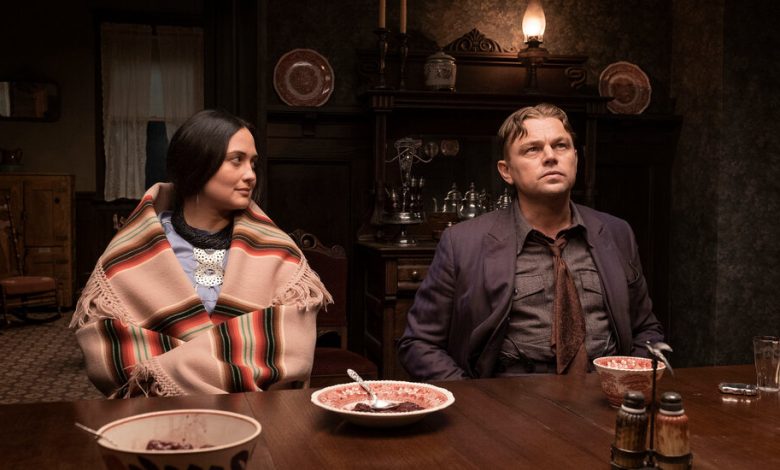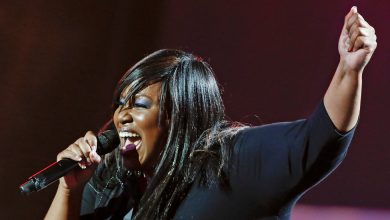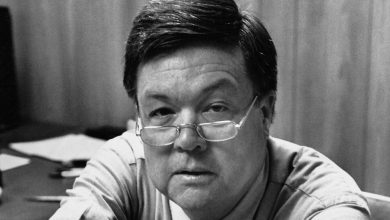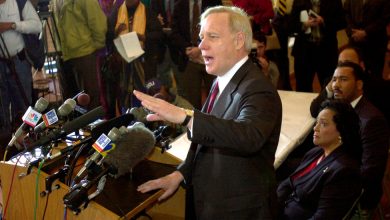In Indigenous Communities, a Divided Reaction to ‘Killers of the Flower Moon’

After watching “Killers of the Flower Moon” at a July screening in Tulsa, Okla., Dana Bear emerged from the theater with a complicated mix of emotions.
Bear, who is an Osage artist and birth worker, felt the horror of witnessing the murders of her people onscreen. But she also felt a sense of deep relief: For years, Bear had told stories of those murders to her children — tales of poisoned relatives and sleepless nights and charred homes — bearing the burden of that tragic history and passing it on to the next generation.
“Now, we don’t have to carry these stories anymore,” she said. “Now, the whole world knows what happened to us.”
Bear is one of many Indigenous people who came away deeply affected by Martin Scorsese’s searing film, based on the 1920s Reign of Terror in Oklahoma, when dozens of oil-rich Osage were killed by their white neighbors. The murders were part of a wide conspiracy led by William Hale, played in the film by Robert De Niro. Those he enlisted included his nephew Ernest Burkhart (Leonardo DiCaprio), a World War I veteran who married Mollie Kyle (Lily Gladstone), a wealthy Osage woman.
The film, which garnered seven Golden Globes nominations on Monday, has divided Indigenous viewers: In a dozen interviews, many of them, particularly members of the Osage Nation in Oklahoma, welcomed the movie, applauding Scorsese for his meticulous portrayal of Osage culture and noting the ways the critically acclaimed drama has broadened awareness of the killings. But other Indigenous viewers said the movie was told from a white man’s perspective and lacked sufficient context about the U.S. government’s complicity in the murders.
“It still felt to me like it was a story about the white men,” said Tim Landes, who is Cherokee and an editor for TulsaPeople magazine. “It was still framed around the criminals who did the bad deeds.” He said he wished the movie had been created by an Indigenous artist.
“There are numerous Indigenous filmmakers, especially in Oklahoma, who are just anxiously awaiting their shot,” he said.
There seems to be broad agreement in Indigenous circles that the drama succeeded in accurately portraying the culture and language of the Osage people. Scorsese and his production team took great pains to incorporate Osage feedback into the movie, community members said. In 2019, several years into the making of the movie, Scorsese and his crew met with more than 200 Osage people, discussing tribe members’ concerns about the movie and asking them questions about their lives.
“My position always was let’s make sure we’re not going to be stereotyped as Hollywood always does,” said Geoffrey Standing Bear, principal chief of the Osage Nation. “Let’s make sure our story to be told by us as much as possible. And we did a good job of that. This was a movie where you hear the Osage language. You hear the sounds of our music.”
In an email to The New York Times, Scorsese said, “We felt a great responsibility to get the story right and this is extremely sensitive territory for the Osage.”
The movie was filmed in Osage County and Washington County, Okla., and throughout production, Scorsese and his team worked with Osage experts on clothing, language, art and more. Many Osage people also acted as extras.
“The way that they were able to consult and really fold in the community gave it its authenticity,” said Addie Roanhorse, who worked in the film’s art department and is a direct descendant of Henry Roan. (Played by William Belleau, he is depicted in the film as having “melancholy” and is killed by one of Hale’s henchmen.)
Scorsese, Gladstone and DiCaprio attended many tribal ceremonies to learn more about their traditions, said Gigi Sieke, an Osage member who appears as an extra in the final scene. She remembers the production team going to her grandfather’s 100-year-old house to measure his table and examine the antiques he owned. When she first watched the movie, she was amazed by how closely the film mirrored the customs of her people, from the way they prayed to the minutiae of their clothing.
Still, it was often painful to watch the film. Dana Bear said she was depressed for a month after the screening, saddened by the reality of how Osage members had been brutally treated.
Growing up, Bear remembered, she saw an elderly man, known to her as “Cowboy,” at grocery stores or gas stations in Fairfax, Okla. It was not until watching the movie that it dawned on her that he was the son of Ernest and Mollie Burkhart.
“It’s not the distant past,” she said. “My grandma lived through that. A lot of families left during that time out of fear and you can look around and see where those families left.”
While many of the Indigenous people interviewed approved of the film, others said it failed to reckon with the ways the murders had been enabled by the federal government’s systematic oppression of Indigenous people.
The film could have included greater context about how the murders were not isolated events but part of a broader history of colonization, said Elizabeth Rule, a Chickasaw Nation member and a professor of critical race, gender and culture studies at American University.
“Violence against Indigenous people unfolded in a systematic way across additional communities in different parts of the country,” she said.
The movie also shied away from the federal government’s history of capturing Native American land through the allotment system, making it easier for the properties to be transferred to white men, said Robert Warrior, an Osage professor of American literature and culture at the University of Kansas.
Other critics say that the film centered the perspective of white men rather than that of Mollie and other Osage people, and that the story could have been better told by an Indigenous filmmaker.
“It would take an Osage to tell the story from the Osage perspective,” said Joel Robinson, an Osage member from Kentucky who wrote a viral review of the movie on Letterboxd. “Someone who has never had to come at it from a place of learning and discovery. Someone who has had it embedded in them.”
The fault lies with an entertainment industry that continues to elevate white people’s creative choice over those of Indigenous filmmakers, he said. “In the current Hollywood system, there’s no shot that the studio would come in and be like, ‘Oh you’re Osage, do you want to make this movie? Here’s $200 million,’” he said, referring to the reported budget of the film.
Scorsese took issue with the contention that “Killers” elevates a white man’s point of view over an Indigenous one. “I can’t really agree that the story is told primarily from a white man’s perspective,” Scorsese said. “I wanted to create a kind of panoramic perspective. There are many interwoven characters and strands in the story. The majority of the white characters are swindlers, thieves and murderers. That includes Ernest and Bill, of course. I think the picture really isn’t from their ‘perspective.’”
But Jeremy Charles, a Cherokee filmmaker, said the movie reminded him how much progress was still needed to improve Indigenous representation in cinema.
“We’re telling these kinds of stories predominantly through a white colonizer lens is the main issue,” he said. “What I’ve been working on and what many Indigenous filmmakers have been working on is getting more stories told from an Indigenous perspective into the mainstream.”
“The world,” he said, “is hungry for our stories.”




